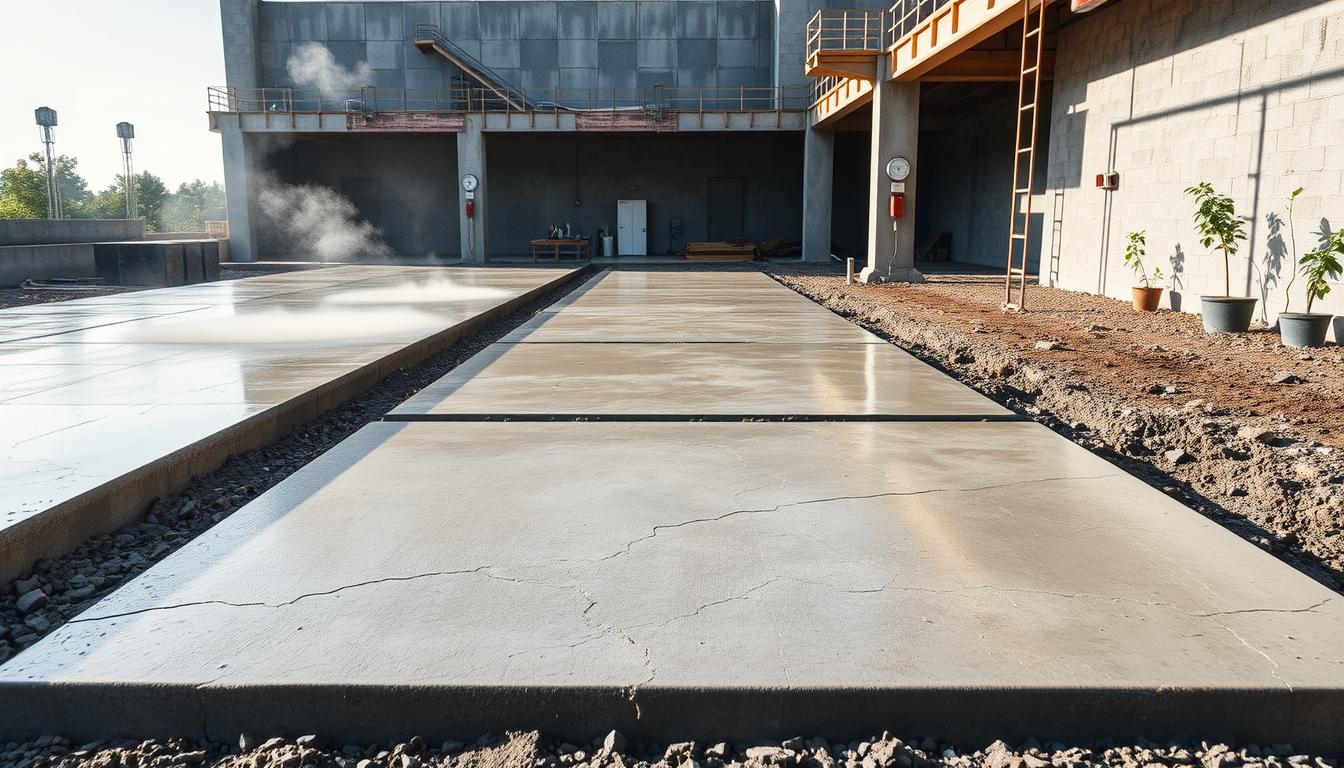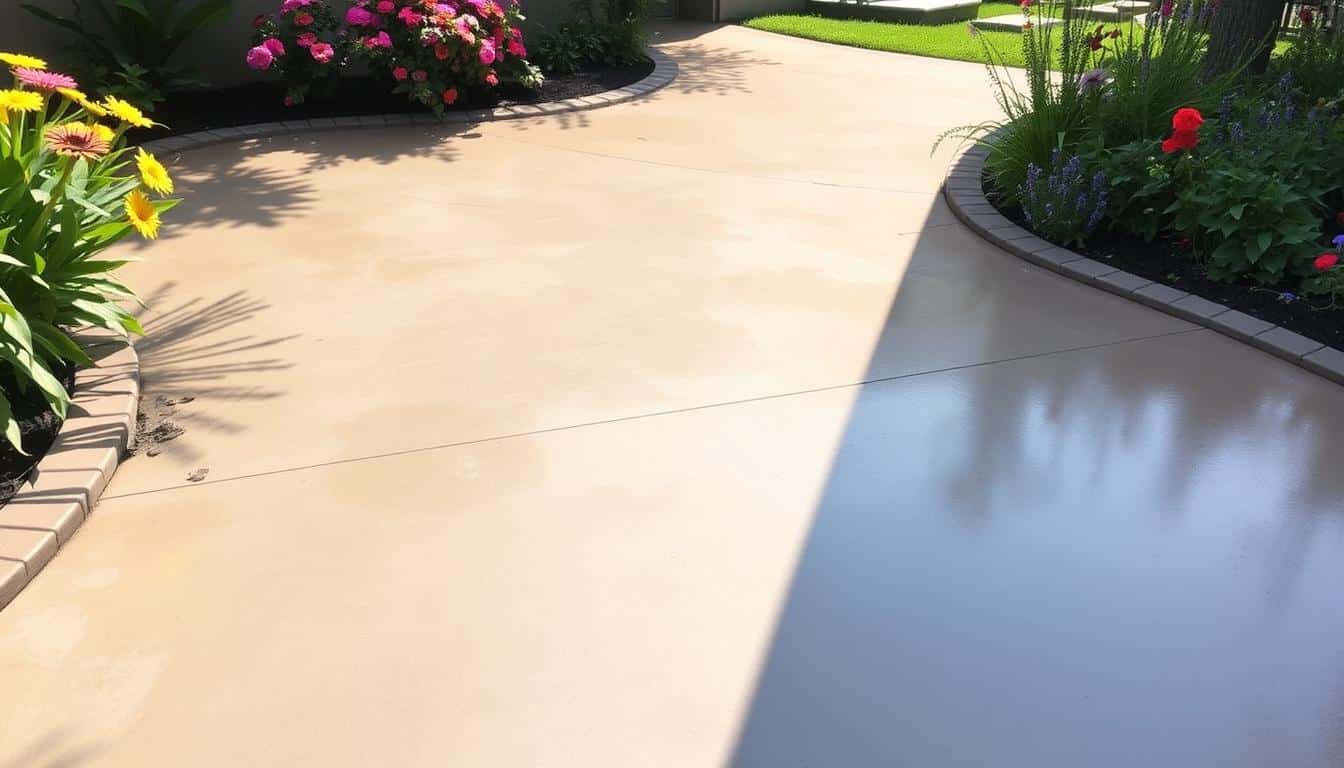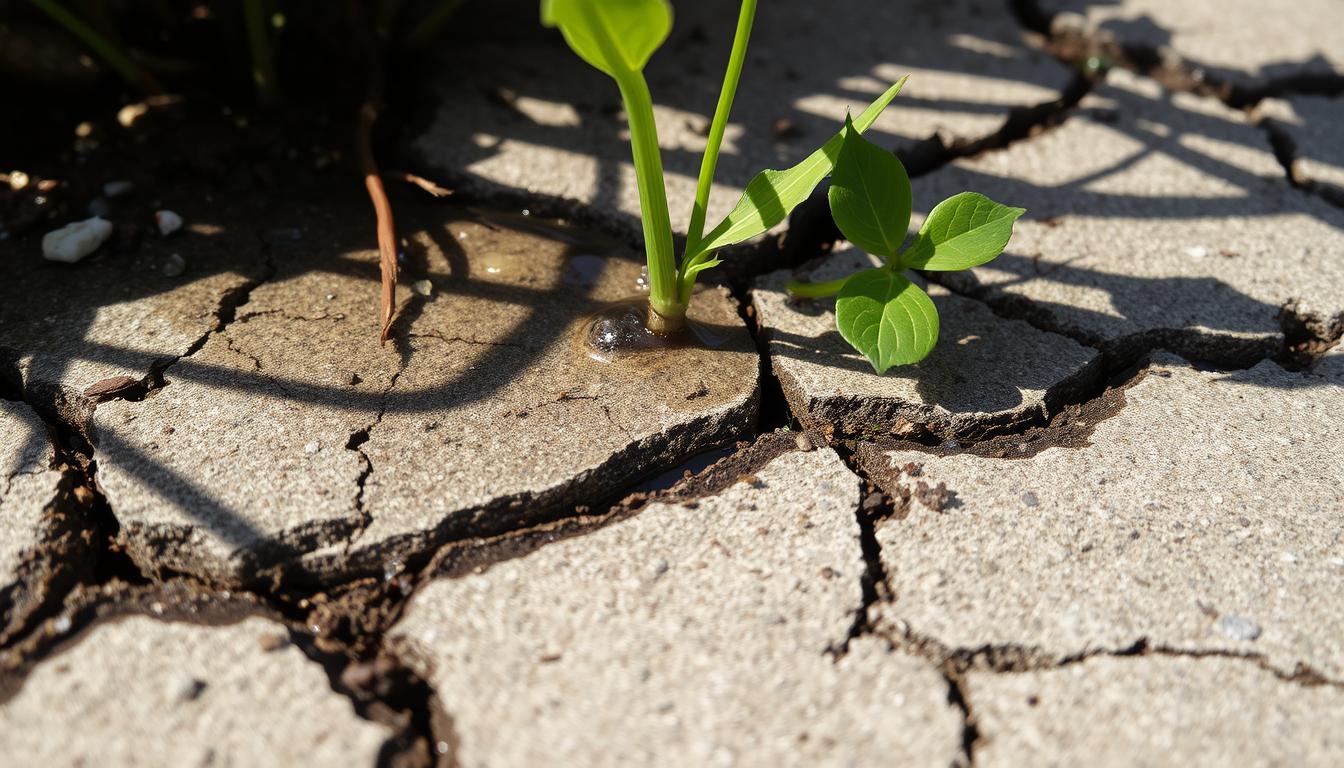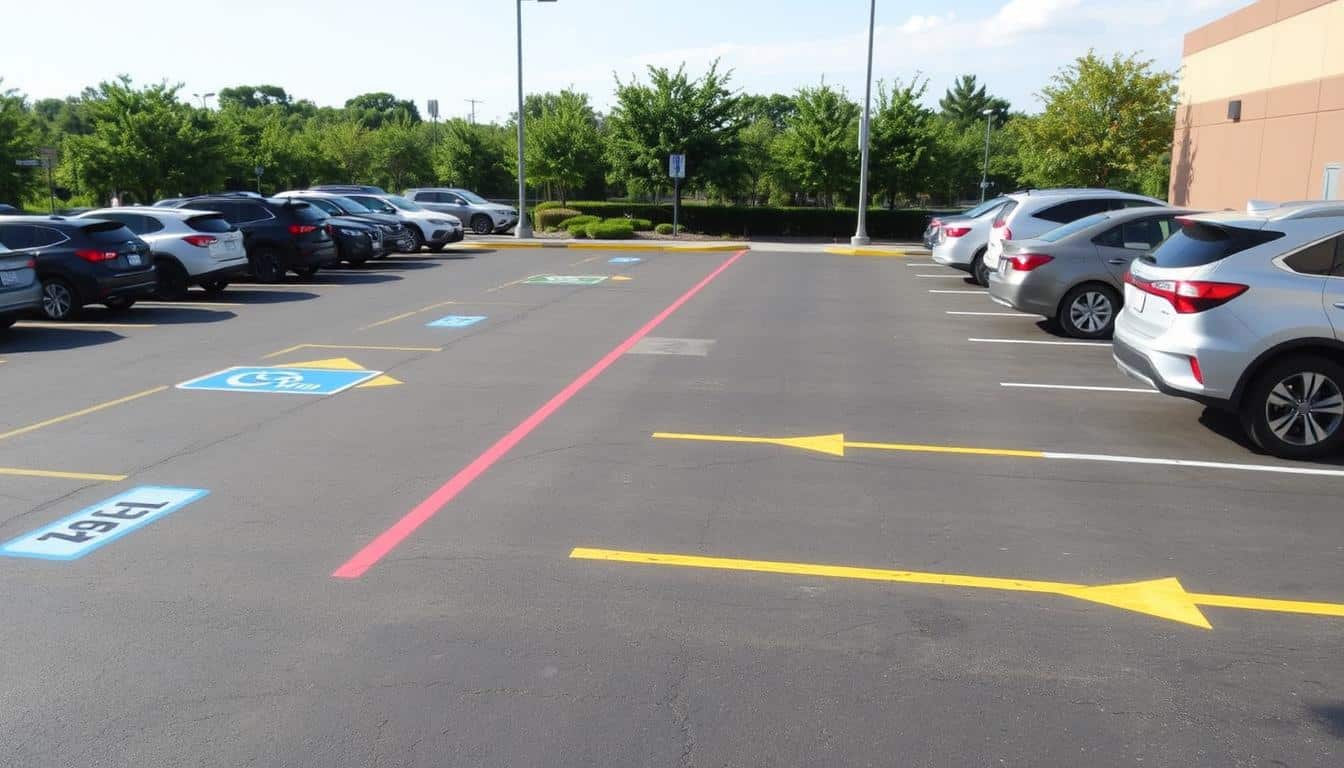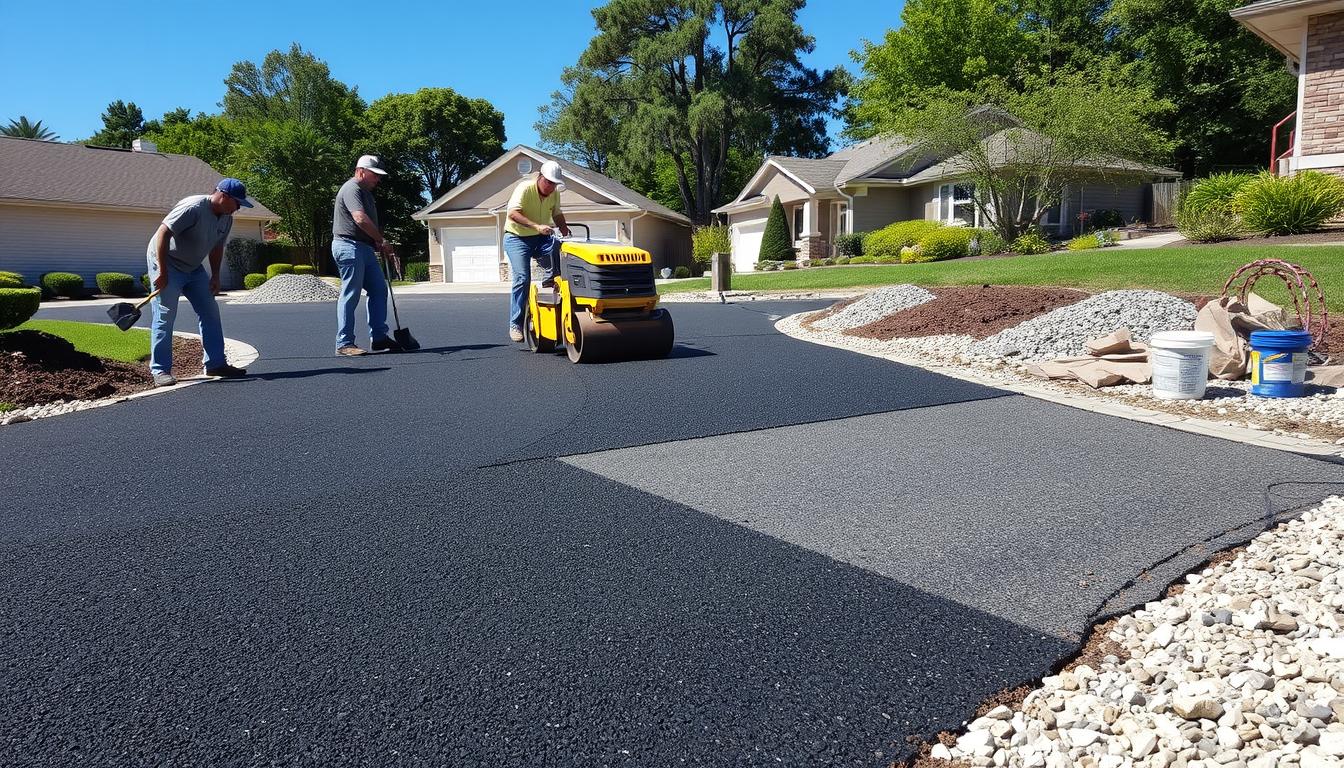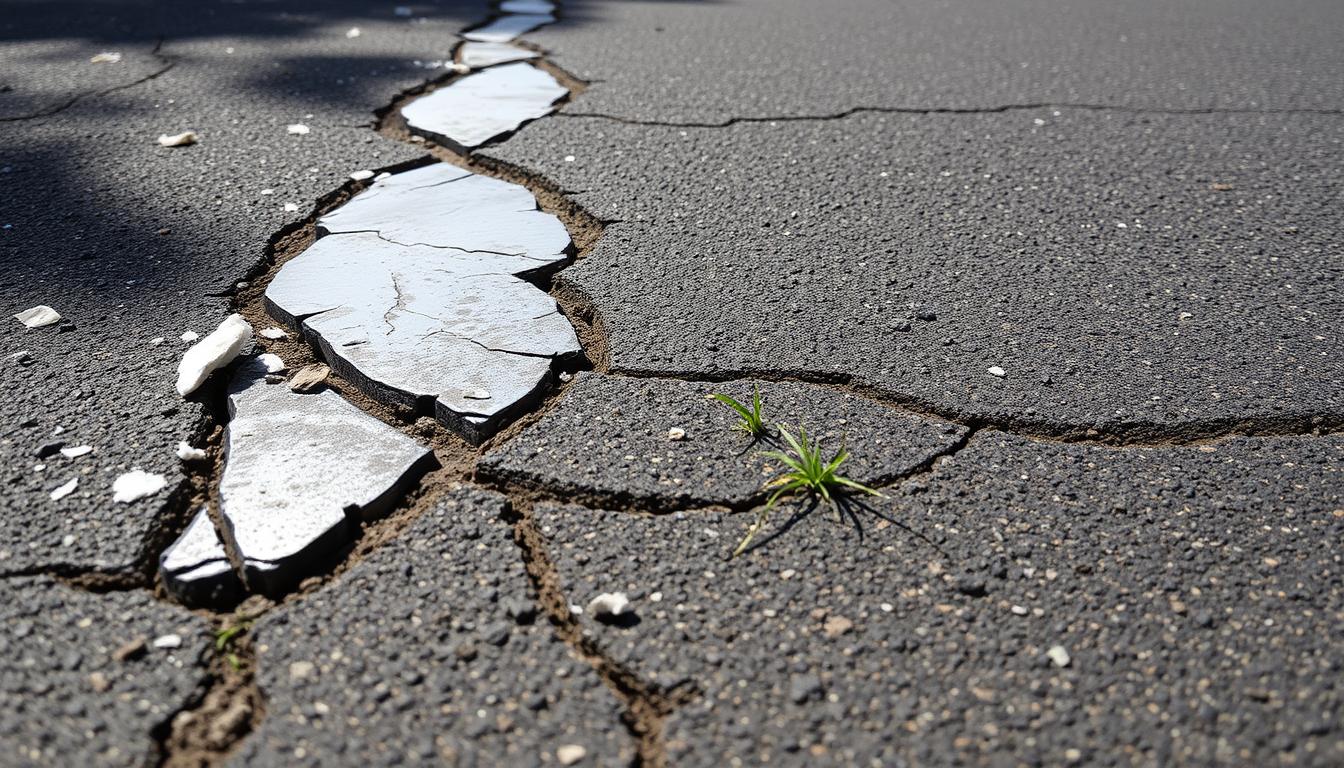Ever wonder how long it takes for concrete to cure? Or why some projects finish fast while others take ages? The answer often lies in concrete curing time. So, how long does concrete take to cure well, and what makes it strong and durable?
Concrete is a strong material that needs careful attention during curing. It usually takes about 28 days to reach full strength. But, this time can change a lot based on temperature, humidity, and concrete type. Knowing the curing concrete timeline is key for everyone involved to get the best results. This article will explore the world of concrete curing, covering important factors that affect curing time.
Key Takeaways
- The standard curing time for concrete is typically 28 days.
- Surface drying occurs within 24-48 hours after pouring.
- Temperature and humidity play a critical role in curing duration.
- Concrete can support people within 24-48 hours after curing.
- Correct water-cement ratio is essential for optimal curing.
- Fast-setting concrete requires full curing despite having rapid initial setting times.
Understanding Concrete Curing Process
The concrete curing process is vital for its hydration and strength. It involves keeping the concrete moist, at the right temperature, and for enough time. This ensures the concrete bonds well and lasts longer, reaching its full strength over time.
What is Concrete Curing?
Concrete curing is about keeping new concrete moist. This helps it hydrate properly, which is key for strength and durability. The American Concrete Institute says seven days of curing is needed to reach 70% of its strength.
The Importance of Curing
Curing is very important for concrete’s performance. It prevents cracks and surface issues, making the concrete more durable. Keeping an eye on the curing process is essential to avoid problems like drying and shrinking.
Factors Affecting Curing Time
Many things can change how long concrete takes to cure. These include the cement type, temperature, humidity, and water-cement ratio. Warmer temperatures speed up curing, while cold slows it down. The right water-cement ratio is also critical for strong, fast-curing concrete.
Typical Curing Times for Different Types of Concrete
Understanding how long concrete takes to cure is essential for any project. The type of concrete greatly influences curing time. This knowledge is vital for planning and executing tasks effectively.
Standard Concrete Curing Times
Standard Portland cement takes about 7 days to cure properly. This time allows it to hydrate and gain strength, reaching 65-90% of its total strength. Proper curing prevents cracks and keeps the concrete strong.
Fast-Setting Concrete
Fast-setting concrete cures in 3-5 days, ideal for quick projects. It allows for early use while keeping structures safe. Be sure to watch the environment closely, as heat can speed up curing.
Specialized Concrete Mixes
Specialized mixes, like those for sulfate resistance, cure for 10 to 14 days. They’re made for tough environments and need time to perform well. Keeping an eye on temperature and humidity is vital for these mixes.
The Role of Weather Conditions
Weather conditions are key in concrete curing, affecting its strength and durability. Knowing how temperature and humidity impact curing is vital for success. The best curing temperature is between 50°F and 70°F. This range prevents moisture loss and cracking.
High temperatures can speed up curing but may weaken the concrete if over 90°F. On the other hand, temperatures below 45°F can slow curing, sometimes taking up to 28 days for full strength.
Impact of Temperature
Temperature greatly influences concrete curing speed. In hot weather, concrete can set in under 24 hours. But, temperatures under 40°F need special care for proper curing.
Without enough heat, concrete may take over 48 hours to set. It will only reach about 50% of its strength in the first week. Monitoring internal temperatures helps predict strength gains.
Effects of Humidity
Humidity affects curing in different ways. Too much humidity slows curing, while too little causes rapid drying and cracking. To keep moisture right, use curing compounds to block evaporation.
Keeping moisture consistent in the first week is key to preventing cracks and improving durability.
Rain and Concrete Curing
Rain can complicate curing. Rain before the concrete sets can damage the surface. But, light rain after setting helps keep moisture levels right, boosting durability.
Regularly spraying water in the first week helps maintain moisture and prevent cracks. Understanding these weather impacts can lead to better concrete and longer life.
Best Practices for Curing Concrete
Curing concrete is key for its strength and durability. Using the right techniques can make a concrete structure last longer. It’s important to keep the concrete moist and use special compounds to protect it.
Techniques for Effective Curing
Water curing is a top tip for curing concrete. Spraying or fogging the surface keeps it moist, which is important in hot weather. You can also cover it with wet burlap or use moisture-retaining covers to stop evaporation.
These methods help keep the concrete hydrated. This reduces the risk of early cracks and ensures it gets strong over time.
Using Curing Compounds
Curing compounds can make curing more effective. They create a film on the surface that helps keep it moist. You can choose from water-based or solvent-based compounds, depending on your project.
When used right, these compounds prevent drying too fast. They also protect against temperature changes that could weaken the concrete.
Maintaining Moisture Levels
It’s important to keep an eye on moisture levels during curing. The ideal humidity should be between 80% to 85%. Concrete can get stronger for years after it’s placed.
Checking moisture and temperature regularly is a good idea. It helps with initial curing and makes the concrete last longer, which is what every project aims for.
Signs That Concrete is Fully Cured
Knowing when concrete is fully cured is key for its strength and lasting power. There are several signs to look for to see if the concrete has cured properly. It’s important to watch these signs closely.
Checking for Hardness
Hardness is a main sign of cured concrete. After 24 to 48 hours, it becomes hard enough for people to walk on. By the first week, it’s about 70% strong. It’s important not to walk on it too soon to avoid damage.
Visual Indicators
Visual signs are also important. Cured concrete looks even in color and texture, with no soft spots. If it looks uneven, it might not have cured right. This means it needs the right moisture and environment.
Testing Methods for Curing
There are tests to check if concrete is fully cured. Strength tests, like compressive strength tests, are the best way to know for sure. Concrete usually reaches 99% of its strength by the 28th day. This is when it’s fully cured.
How to Enhance the Curing Process
Improving the curing process is key to getting strong and durable concrete. There are many ways to speed up concrete curing. This helps finish projects faster and makes them better.
Using additives, covering techniques, and timing curing actions right can make a big difference. These steps help improve the concrete’s performance and prevent drying too fast.
Additives and Their Benefits
Additives are important for making concrete stronger. They help the concrete hydrate better. This means the concrete hardens faster and more efficiently.
These substances help the concrete perform better. They also stop it from drying out too quickly. This is good for the curing process.
Using Covering Techniques
Covering techniques help control moisture and temperature. Using tarps, blankets, or insulation keeps the environment right. This stops the concrete from drying out too fast.
It also lowers the chance of cracks. This ensures the concrete hydrates well. This is important for a good curing process.
Timing Your Curing Actions
When you start curing is very important. Starting right after you lay the concrete is best. This stops bad weather from slowing down hydration.
Starting early and keeping an eye on it helps a lot. It leads to better concrete results.
Common Misconceptions About Concrete Curing
Many people don’t understand concrete curing well. They often mix up curing and setting. Setting is when concrete first hardens, which happens quickly. Curing, on the other hand, is a longer process that helps concrete get stronger by keeping it moist.
Misunderstanding Curing vs. Setting
Some think concrete is strong enough to use after just 7 days. But, curing should go on for at least 7 days, and 28 days is best for full strength. In the first week, concrete gets about 70% strong. But, it keeps getting stronger even after that.
Myths About Curing Duration
Many believe curing doesn’t need to last long. But, not curing enough can cause problems like cracks and weak structures. Keeping the concrete moist, even in changing weather, is key to avoiding these issues.
Half-Cures: What You Need to Know
The term “half-cured” can be misleading about concrete’s durability. Stopping curing too soon can weaken the concrete. Keeping it covered helps keep it moist and protects it from the weather, showing why curing is so important.
Importance of Hiring Professionals for Concrete Work
Concrete curing is complex and needs expertise. By hiring pros, you get top-notch guidance and quality work. HT Paving and Seal Coating Services in the Bay Area is known for excellence, improving your concrete’s life and performance.
Why Choose HT Paving and Seal Coating Services?
HT Paving and Seal Coating Services is family-owned and focuses on quality and customer happiness. Their team knows concrete work well, ensuring your concrete is strong and durable. They follow best practices to avoid cracks and boost strength.
Our Expertise in Concrete Curing
Experts keep moisture levels right and use the best curing methods. HT Paving and Seal Coating Services uses advanced tools and methods. They finish projects 30% faster than others, making the process more efficient.
Client Testimonials and Satisfaction
Many clients are happy with the results from hiring pros for concrete work. They see better durability and looks, and save money too. Choosing HT Paving and Seal Coating Services means getting reliable and successful concrete solutions.
Local Regulations Regarding Concrete Curing
It’s important to know the local rules for concrete curing in the Bay Area. These rules help ensure the quality and safety of concrete projects. They set minimum curing times and other key practices.
Understanding Bay Area Requirements
The Bay Area has rules for new concrete and traffic types. For walking, wait 24 to 48 hours. Cars can go on it after 7 days, but 28 days is better.
Heavy vehicles like trucks and buses should wait at least 14 days. Waiting up to 28 days is recommended for their safety.
Safety Standards to Follow
Following safety rules is key for strong and safe concrete. Weather, slab thickness, and moisture levels affect curing times. Hot and dry weather dries it out too fast, while cold weather slows it down.
Sticking to these rules helps avoid cracks and makes the concrete last longer.
Permits and Inspections
Before starting a concrete project, you need the right permits. Local rules often require inspections at different stages. Talking to local officials or experts can help you meet these requirements and ensure a successful project.
Conclusion and Call to Action
Understanding the concrete curing process is key for strong and durable projects. It starts with recognizing the initial set time of 6 to 8 hours. Then, it takes several weeks to reach full strength.
Correct techniques and conditions are vital for success. Keeping moisture and temperature levels right can greatly affect curing times and quality.
Summary of Concrete Curing Insights
Weather conditions and the concrete mix type matter a lot. Following best practices can improve curing results and extend the concrete’s life and look. For the best results, consider hiring professionals who know concrete work well.
Contact HT Paving and Seal Coating Services at (415) 774-6424
Need expert help for your concrete projects in the Bay Area or elsewhere? Contact HT Paving and Seal Coating Services. We aim to offer top-notch service that makes customers happy and meets high standards. Call us today to see how we can make your project a success!

